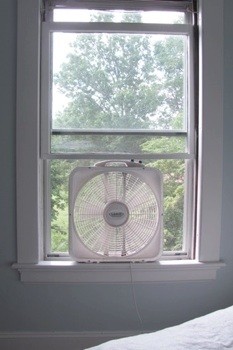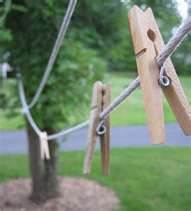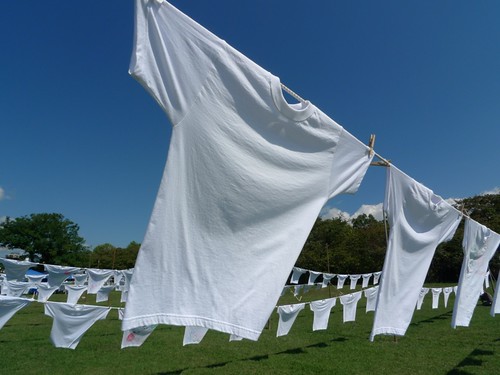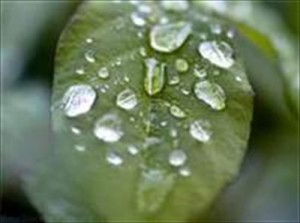Archive for the ‘Around the House’ Category
Homemade Sugar Scrub
There is nothing worse than the dry cracked feeling of winter skin and with the weather we’ve had all over the country I’m sure many of us have been dealing with it.
In an act of desperation this past weekend I whipped up a batch of soothing lavender sugar scrub. I had forgotten how simple and fast it is to make.
Unlike the scrubs you find in drug stores, department stores or in beauty supply shops, homemade scrubs are much better for your skin, don’t contain chemicals and are much, much cheaper. The part I like best is my ability to tailor the fragrances to match my mood or the season. If I want a soothing, relaxing scrub I use lavender oil. Early spring days, when the sun shines and the weather warms call out for a bright orange vanilla scented scrub. And, after a day of work in the garden or cleaning out the barn something from the mint family is perfect for those tired sore muscles. With the number of essential oils available the possibilities are endless. So—choose your favorites and enjoy!
Basic Sugar Scrub
Materials & Supplies
2 cups coarse sugar
1 cup olive oil
15-20 drops of your favorite essential oil or oil blend
1 clean glass lidded jar
Directions
- Combine ingredients in a bowl, stirring well to combine.
- When mixed well pour into lidded jar.
- Use homemade sugar scrub to slough away dead skin and moisturize skin.
NOW—sink into a hot tub and pamper your winter skin!
Ward Off Winter Doldrums

Get Up & Get Out!
With much of the country locked in a polar vortex colder than the inside of a freezer it may seem strange to exalt the virtues of outdoor activities. Even in my area though, where we don’t really deal with the frozen underbelly of winter weather many are bound to struggle with the inactivity of the season. So, in an effort to lift spirits and ward off the winter blahs, I’ve listed a few good reasons to love this season and time outdoors.
1. Enjoy the Morning Light Show: Unlike the summer months when sunrise occurs long before we raise our heads from our pillows, the winter sunrise waits until the more civilized time of about 7:00 am to make its appearance. With the lack of foliage on the trees and the crisp brilliance of the sky, or snow and ice sparkling in the sunlight it is also the perfect reason to break out the camera for some beautiful shots.
2. Keep Colds and Flues at Arms Length: It’s no coincidence that colds and flues increase during the winter months. After all they love to congregate and flourish in warm places, and, what better place to multiply than indoors with other humans and their germs. Spending a bit of time outdoors each day helps to separate you from the bugs.
3. Banishing the Blahs: Winter’s diminished light and our lower activity levels are the perfect combination to bring on winter blahs. But, you can banish your blue mood with a brisk walk outdoors or leisurely stroll, weather permitting. Staying active in the winter can also increase your vitality and raise your self-esteem, while decreasing tension and depression.
4. Get a Dose of Vitamin D: Our body’s production of vitamin D plummets during sunless winter months when the days are shorter. One Norwegian study found that a fair-skinned person only needs five minutes of sun exposure in July to attain a healthy daily dose of vitamin D, but in January it can take well over an hour of sun worshipping to get he same result.
5. Burn Calories: Winter activities area great way to burn calories while attending to your mental and physical health. Find an activity you like and make the commitment to doing it a few times a week. Even if it just talking a walk you body and mind will thank you for it.
6. Stay Hydrated: Snow may be piled to the windowsill, but fierce cold winds can be drying, so drink plenty of water to stay hydrated. Your body and your skin will thank you.
No matter what your weather is like in winter you can find a reason and an activity to help chase away the winter blahs, lift your spirits and make your outlook on life a whole lot better. But, remember always dress for the weather to prevent frost bite, hypothermia or a dangerous fall. Wear layers and sturdy boots whenever you venture outdoors. This is a special season full of amazing natural beauty. Take time to enjoy it.
The Shortest Day – Winter Solstice

In ancient times, people were afraid when the days grew shorter and shorter with less and less daylight. As time went by they began to notice that even though the days got shorter there was one day of the year when the sun changed and began to move closer to them again. Tomorrow, December 21st marks the winter solstice, the first day of winter, that moment in time when days grow longer and the nights become shorter. Many cultures have built traditions around the ancient solstice celebrations. Hanukkah, the Festival of Lights and parts of our modern Christmas traditions can all trace their roots back to ancient solstice celebrations.
This is a great marker on the calendar for me because it reminds me that spring is just a few months away. Our winter is still in full swing here on the farm though. The storms keep pounding through our area with no relief in sight. Six inches of rain in just 2 days has fallen. It makes me wonder if I should be building an Ark rather than sitting at the kitchen table laying out plans for my spring garden, buying new hens or ordering catalog seeds and plants.
The girls (hens) are none to happy either. Last week they were prowling around the yard in search of worms and other bugs brought to the surface by the cool damp weather, but for the past few days they’ve been hold up in the barn, not brave enough to venture out into the downpour. My plans to bring in an early batch of meat birds have also succumbed to the weather and will be rescheduled for a later time, when the weather won’t threaten so many losses.
It’s still a magical time, though, despite the weather. One year is put to bed and put behind us while another stretches out before us, pushing above the surface like early spring peas.
The Shortest Day
by Susan Cooper
And so the Shortest Day came and the year died
And everywhere down the centuries of the snow-white world
Came people singing, dancing,
To drive the dark away.
They lighted candles in the winter trees;
They hung their homes with evergreen;
They burned beseeching fires all night long
To keep the year alive.
And when the new year’s sunshine blazed awake
They shouted, revelling.
Through all the frosty ages you can hear them
Echoing behind us – listen!
All the long echoes, sing the same delight,
This Shortest Day,
As promise wakens in the sleeping land:
They carol, feast, give thanks,
And dearly love their friends,
And hope for peace.
And now so do we, here, now,
This year and every year.
Welcome Yule!
Photo Credit: blessed1indeed
Mother Nature’s Air Conditioning
 We’ve had a relatively mild summer by all accounts, but that is about to change. Weatherman says the mercury will start to rise later this week and that can mean only one thing—hot!
We’ve had a relatively mild summer by all accounts, but that is about to change. Weatherman says the mercury will start to rise later this week and that can mean only one thing—hot!
Without air conditioning life would be unbearable. But, with the kind of air conditioning most people use life could get very, very expensive. In my area, when the temps go up so do the electric bills to run household cooling systems, sometimes into the hundreds of dollars a month.
I have even had conversations with people who complained about spending $600 or more a month to cool their home. How could that be possible, I wondered? What were they doing, I thought? But, rather than speculate I asked, and what I found out was astonishing.
In the group I was talking to every person had their home cooled down to 70-degrees. Most had their thermostat set to turn the air on at 72-degrees. And, every person left the air on when they were not at home. I didn’t know what to say. I was amazed.
I must have given them a strange look because one of the group asked why I looked so puzzled. I explained that I couldn’t imagine spending that much money just to move hot air out of my house, which, in turn, prompted questions and looks that seemed to say, “what else are we suppose to do?” When I told them my electric bill was rarely over $40 a month, even in the summer, it was their turn to be amazed.
I explained that I had all I needed to keep my house comfortable even when the temps pushed towards 100. Large trees in the front and back of the house shade it from the sun. Big windows allow good air flow from one end of the house to the other, and, most importantly, box fans.
I went on to explain that when I placed fans, facing out, in the windows where the house heats up and fans in the windows near the shade trees facing in I can create a cooling draft that keeps the whole house very pleasant. The trick is to draw the hot air “out”, while pulling the cool air “in”. Constantly flowing air also helps make the house feel cooler even if the inside temp increases.
For really hot days damp sheets can be hung near windows so the in-coming air passes through them before it is drawn throughout the house.
That’s all there is too it!
Give Mother Nature a chance and she’ll not only keep you comfortable all summer long, but she’ll save you a bundle of money too.
Steamming Bowls and Library Books
My mornings have taken on a new rhythm now that I am working full-time again. The slow leisurely pace of morning is gone. Most of my chores are done before the rest of world thinks of getting up. I feel at home with the new routine, keeping up with fall preps and the farm humming. Change is afoot and not just in the weather. I have plans, folks, plans to finish the greenhouse, plans to plant a winter garden full of greens and roots, plans to start an herb garden of kitchen and medicinals. There will be room for new chicks in the barn and perhaps a pig in the freezer.
Fall is not quite in full swing, but nights are dipping into the 40’s. I wake in the cool foggy morning to a steaming hot bowl of oatmeal, choke full of fruit and nuts. I cook it over my stove rather than in the microwave, it only takes a few minutes. People think I’m crazy that I don’t use those little brown packages that cook up in 30-seconds or so. But, I like cooking over a stove, any stove—gas, electric, wood. I do have a microwave I just never use it for cooking. And—who needs it anyway. Oatmeal is simply adding oats and milk and fruit and nuts and sugar and cinnamon to a pot, and there you have it, an amazing hearty breakfast full of carbs and energy, enough to keep you going through swinging a hammer or stacking a load of firewood.
Tonight I’m off to town to the library’s annual book sale. I’m sure the place will be packed, it always is. The sale has become a kind of ritual for me, a thing I do every season…adding to my growing library. I will comb the stacks, make my selections, sit on the floor and decide what to buy. And, when I am finished I’ll head over to the small café across the street for a wonderful bowl of homemade clam chowder. It’s not like most people would spend a Friday evening, but it is mine.
Recycling Gray Water for Home Gardens
In every homestead’s attempt to become more self-sustaining water is a crucial and sometimes elusive commodity. But, using simple rainwater collection systems and reusing gray water from the washing machine on flowers, shrubs and trees, can go a long way to help offset what comes from municipalities.
Southern California is technically a desert. Our annual rainfall hovers around 10 to 15-inches per year. Sometimes we get more, but more times than not it’s less. Sometimes plants in a vegetable garden or flowerbed need more water than is provided through normal rainfall. Or, maybe your area is not known for frequent or steady rainfall throughout the growing season. In those situations most gardeners just turn on an outside faucet to water the garden, drawing on community water supplies, or from a private well.
But, what if you had another way to not only water the garden, berry patch or orchard, but save money as well? With below normal rainfall and droughts in some parts of the country people are looking for other ways to provide gardens with the moisture they need without using what may become a precious supply of fresh water.
One method is to use the wastewater, usually referred to as gray water, produced in the home. But, what is gray water?
Gray water is all the non-toilet wastewater produced in the average household including the water from bathtubs, showers, sinks, washing machines, and dishwashers. Although gray water does not need extensive chemical or biological treatment before it can be used in the garden as irrigation water, it still must be used carefully because it usually contains grease, hair, detergent, cosmetics, dead skin, food particles and small amounts of fecal matter.
How much gray water can be used in the home garden?
First, collect only as much waste water as you will need to meet the water requirements of your garden. The rest should go into your sewer or septic system.
A good rule-of-thumb for deciding how much gray water to use on your garden is that a square foot of well-drained, loamy soil can handle about a half gallon of gray water per week. In other words, if your garden area is 500 square feet, then you can put up to 250 gallons of gray water on your garden each week.
If you can be choosy about the gray water you recycle on your garden, then use shower and bathtub water first, followed in decreasing order of desirability by water from the bathroom sink, utility sink, washing machine, kitchen sink and dishwasher. Water from the kitchen sink and dishwasher is the least desirable because of the larger proportion of grease, food particles and other materials it will contain. If there is no way you can avoid using water from the kitchen sink and dishwasher, try to limit the amount of grease and solid food particles that go down the drain (non-meat food scraps should be composted rather then put down the garbage disposal). NEVER recycle water from a washing machine that has been used to wash baby diapers because it may contain fecal matter.
What about soaps and detergents? Will they harm the soil and plants?
Soaps and detergents are biodegradable, but they can cause problems when gray water is used over a long period. The main problem with most laundry detergents is that they contain sodium salts which, if present in large amounts, can damage the soil structure, can create an alkaline condition, and can also damage plants.
Avoid detergents that advertise “softening power,” because they will have a large amount of sodium-based compounds. The phosphates in detergents can be good for plant growth, but unfortunately, the detergents highest in phosphates usually contain the greatest amount of sodium. If you re-use washing machine water, cut down or eliminate the amount of bleach you use and do not use detergents or additives that contain boron, which is especially toxic to plants.
When doing your household cleaning, use ammonia, or products that contain ammonia, instead of chlorine as the cleaning agent.
What precautions should I take to protect the soil from damage when I use gray water over a long period of time?
A big danger in using gray water is the build-up of sodium in the soil. You can find out if the sodium levels are high by testing the pH of your soil. A pH of 7.5 or above indicates that your soil has become loaded with sodium. You can correct or avoid this problem by spreading gypsum on the soil at a rate of two pounds per 100 square feet about once a month. Rainfall, or alternating gray water applications with fresh water, will help leach sodium and excess salts out of the soil.
The best solution though is to use detergents that are sodium free or low in sodium.
Is there any danger of spreading disease by using gray water in the garden?
Recycled water from the bath, shower, or washing machine can contain organisms causing diseases in humans. However, when gray water is poured onto soil that has an abundance of organic matter, the potentially harmful bacteria and viruses die quickly. If any should survive, it is unlikely that they would be taken up by the roots of garden plants and transferred to the edible portion of food plants. Nevertheless, for safety, you could use gray water primarily to irrigate lawns and ornamental plants, and sparingly on fruits and vegetables.
How should I apply gray water to the soil?
Whether you carry your gray water to the garden by hand in buckets or modify your household plumbing for direct delivery of water to the area where it is needed, a number of guidelines should be followed in applying the water. They include:
If possible, use gray water for your ornamental plants and shrubs and use what fresh water is available for your vegetable garden. If you need to use gray water for irrigating food plants, restrict its application to the soil around plants such as corn, tomatoes, broccoli, or other vegetables of which only the above ground part is eaten. Do not apply gray water to leafy vegetables or root crops.
Apply gray water directly to the soil surface. Do not use an overhead sprinkler, or allow the recycled water to splash off the soil and contact the above-ground portion of the plants. If you have a drip irrigation system, do not use gray water in it since any solid matter it might contain could clog the emitters in the pipe.
Pour gray water on flat garden areas; avoid steep slopes where runoff could be a problem.
Apply wastewater over a broad area; avoid concentrating it on one particular site.
When possible, rotate applications of gray water with fresh water. The fresh water will help leach out any soil contaminants that might be building up.
Apply thick compost mulches to areas where you use gray water. They will speed the natural decomposition of waste residues.
Use gray water on well-established plants only. Seedlings can not withstand the impurities of the waste water.
Do not use gray water, which is alkaline, on acid-loving plants such as rhododendrons and azaleas. Be sure to rotate your use of gray water with fresh water on lawns and fruit trees.
How can I get gray water from the house to the garden?
Gray water can be transported to the garden several ways, the most basic being to bucket the water from the sinks and bathtub into pails and hand carry it to the garden. More sophisticated systems involve siphoning or pumping water from the bathtub or other deep basins (sumps) to the yard through a garden hose, or removing the trap from the bathroom sink drain pipe and putting a five-gallon, or larger, bucket beneath the sink.
When using gray water from the washing machine first drain it into a large bucket (at least 35 gallon) or trashcan fitted with a hose bib so you can attach a hose to carry water to planted areas. Do not attach a hose directly to the washing machine drain. The potential backflow can cause damage to your washer.
For more information on waste water recycling and supplies check out this website http://www.oasisdesign.net/index.htm.
National Clothesline Week! Seriously!
 Some day a bright young thing working in a basement lab using cheap hardware store parts might come up with a better way of obtaining free energy, but until that time comes clotheslines are the next best thing!
Some day a bright young thing working in a basement lab using cheap hardware store parts might come up with a better way of obtaining free energy, but until that time comes clotheslines are the next best thing!
IN THE MEANTIME…LET’S CELEBRATE — The first week in June is International Clothesline Week and was created to encourage people to hang their clothes on a line to dry instead of using electricity or gas sucking clothes dryers.
For nearly 10 years, thousands of people and communities worldwide have participated in International Clothesline Week, and many communities have revised their regulations to allow clotheslines. Now that’s what I call changing the world for the better!
Do you remember your mom hanging clothes out to dry? Do you remember seeing all the bright colors flapping in the breeze? Can you smell the fresh spring day while taking them down? Even in winter clothes were hung out to dry, sometimes coming in so frozen they could stand on their own.
Now most people use dryers exclusively and world-wide that adds up to a lot of dryers!
Opt for Breeze Power, Sun Power, HUMAN Power!
Did you know…Over 80% of households use a clothes dryer, drawing huge amounts of precious energy! If every household spent even one day hanging their clothes out to dry it would save a huge amount of energy and equal a huge savings in dollars. More importantly less dryer use translates into fewer pollutants and fewer health consequences associated with coal driven electricity.



Recent comments
Aenean nonummy hendrerit mauris. Phasellus porta.